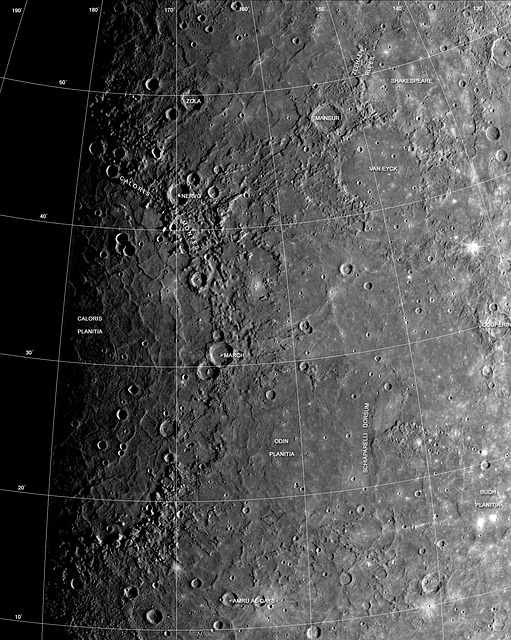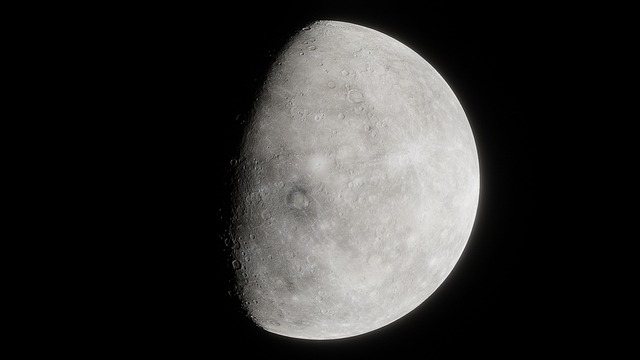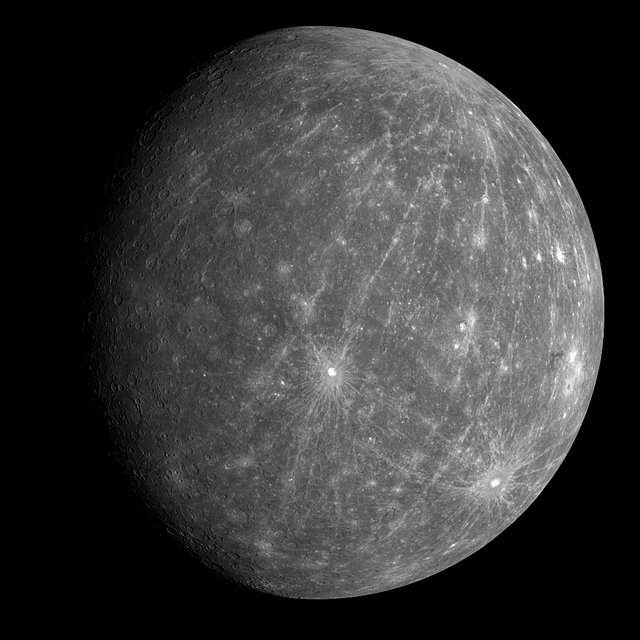Welcome to a closer look at the innermost planet of our solar system – Mercury. This small and enigmatic planet has fascinated scientists and stargazers alike for centuries with its unique characteristics and intriguing mysteries.
In this article, we will delve into the depths of Mercury, exploring its basic facts, history of exploration, physical features, atmosphere and climate, and interesting phenomena.
Our aim is to provide you with an in-depth understanding of this fascinating world and shed light on its significance in our solar system. So buckle up and get ready to discover the wonders of Mercury.
Table of Contents
What is Mercury?
Mercury, the smallest planet in our solar system, is often referred to as the “innermost planet” due to its close proximity to the sun. Named after the Roman messenger god, Mercury is the closest planet to the sun, with an average distance of 36 million miles. Its size is also remarkable, being only slightly larger than Earth’s moon. In this article, we will take a closer look at Mercury and explore its fascinating characteristics and features.

mercury
One of the most notable features of Mercury is its unique orbit. Unlike the other planets in our solar system, Mercury has a highly elliptical orbit, making it the most eccentric planet. This means that its distance from the sun varies greatly, ranging from 29 million miles at its closest point to 43 million miles at its farthest point. This also contributes to Mercury’s extreme temperatures, with highs reaching up to 800 degrees Fahrenheit and lows dropping to -290 degrees Fahrenheit.
In terms of composition, Mercury is predominantly made up of silicate rock and metals, with a large iron core that makes up about 70% of its mass. This makes Mercury the second densest planet in our solar system after Earth. Due to its small size and proximity to the sun, Mercury has a weak gravitational pull, making it difficult for the planet to hold on to an atmosphere. As a result, Mercury has a very thin atmosphere, almost non-existent, and is constantly bombarded by solar winds.
Mercury’s unique characteristics are not limited to its orbit and composition. It also has the slowest rotation of any planet, with a day on Mercury lasting 176 Earth days. This is due to its 3:2 spin-orbit resonance, where Mercury rotates three times on its axis for every two orbits around the sun. Another interesting fact about Mercury is that it has no moons or rings, making it the only planet in our solar system without any natural satellites.
The planet’s name, Mercury, was given by ancient civilizations due to its quick movement across the sky. It was first observed by the Sumerians, who called it “Ubu-idim-gud-ud” or “The Jumping Planet”. Later, the Greeks named it “Hermes”, and the Romans named it “Mercury”. It wasn’t until the 17th century that astronomers were able to observe Mercury through telescopes and gather more information about its characteristics.
In the next section, we will explore the history of human exploration on Mercury and the key discoveries that have been made.
History of Exploration
Mercury has always been a fascinating planet for scientists and astronomers due to its close proximity to the sun and its unique features. However, exploring this innermost planet has not been an easy task. In fact, it wasn’t until the 20th century that we were able to get a closer look at Mercury through unmanned spacecraft missions.
The first mission to Mercury was the Mariner 10 in 1974, which provided the first close-up images of the planet. This mission was followed by the MESSENGER (Mercury Surface, Space Environment, Geochemistry and Ranging) spacecraft in 2004, which orbited Mercury and collected data for four years. Most recently, in 2018, the European Space Agency (ESA) launched the BepiColombo mission, which is a joint effort with the Japanese Aerospace Exploration Agency (JAXA) to study Mercury in detail for the next seven years.
One of the biggest challenges of exploring Mercury is its proximity to the sun. The intense heat and radiation make it difficult for spacecrafts to survive and gather data. This is why the Mariner 10 and MESSENGER spacecrafts were designed with special heat shields to protect them from the sun’s heat. In fact, MESSENGER had to use a complex series of flybys of Earth, Venus, and Mercury to get into orbit around the planet.
Despite these challenges, the missions to Mercury have been successful in providing valuable insights into this mysterious planet. The Mariner 10 mission, for example, discovered that Mercury has a magnetic field, which was unexpected for such a small planet. MESSENGER, on the other hand, provided detailed images of Mercury’s surface and discovered evidence of water ice at the planet’s poles.
These missions have also revealed some fascinating facts about Mercury’s history. For instance, scientists found that Mercury’s surface is covered in craters, indicating that it has been bombarded with meteorites over the years. They also discovered “scarps”, which are long cliffs caused by the planet’s shrinking as it cools down.
One of the most significant findings from these missions is the Caloris Basin, a large impact crater that is about 1,550 kilometers in diameter. This feature is believed to have been created by an asteroid impact billions of years ago and is considered one of the most prominent landmarks on Mercury’s surface.
Moreover, the missions have also provided valuable data on Mercury’s poles, which were previously unseen due to the planet’s tilt and orbit. MESSENGER discovered that the north pole has a permanently shadowed area that could potentially contain water ice. This finding has sparked further research and interest in the possibility of life on Mercury.
In conclusion, the history of exploration of Mercury has been a journey of discovery and challenges. With each mission, we have gained a better understanding of this enigmatic planet and its place in our solar system. The ongoing BepiColombo mission is expected to provide even more insights and pave the way for future explorations of this fascinating innermost planet.
Physical Features of Mercury
Mercury, the smallest and innermost planet in our solar system, may be small in size but it holds a significant amount of fascinating features. With a diameter of only 4,879 kilometers, it is the smallest planet in our solar system, even smaller than some of our moons. Its proximity to the sun, being only about 58 million kilometers away, makes it a challenging planet to explore. In this section, we will delve into the physical features of Mercury, including its unique surface and geological processes.
One of the most striking features of Mercury is its heavily cratered surface, resembling the surface of our moon. This is due to its lack of atmosphere, which means there is nothing to protect it from impacts by asteroids and comets. Some of these craters have been named after famous artists, such as Beethoven and Rembrandt. These craters vary in size and depth, with the largest being the Caloris Basin, measuring about 1,550 kilometers in diameter. This impact crater is so large that it can be seen from Earth with a powerful telescope.
Aside from craters, Mercury’s surface is also marked by long and steep cliffs called scarps. These scarps can reach up to hundreds of kilometers in length and are believed to have formed due to the planet’s shrinking core. This phenomenon is known as global contraction, where the planet’s core cools and contracts, causing the surface to wrinkle and form these scarps. Another notable feature on Mercury’s surface is the volcanic plains, which cover about 40% of the planet’s surface. These plains are believed to have formed from large volcanic eruptions in the past.
Mercury’s unique geological processes are also evident in its surface features. The most prominent one is the presence of hollows, which are shallow depressions with bright and reflective floors. These hollows are thought to be formed by the evaporation of volatile substances such as sulfur and carbon dioxide, leaving behind a hollowed-out area. This process is aided by the intense heat from the sun, which can reach up to 427 degrees Celsius on Mercury’s surface.
In terms of landmarks, Mercury has some notable features worth mentioning. One of them is the Caloris Basin, mentioned earlier, which is the largest impact crater on the planet. It is surrounded by a ring of mountains, with some peaks reaching up to 2 kilometers high. Another significant landmark is the Rachmaninoff basin, which is the largest smooth plain on Mercury’s surface, measuring about 320 kilometers in diameter. It is believed to have formed from a large impact event, similar to the one that formed the Caloris Basin.
In conclusion, despite its small size, Mercury has a diverse range of physical features that make it a fascinating planet to explore. Its heavily cratered surface, deep scarps, volcanic plains, and unique geological processes all contribute to its uniqueness. With ongoing research and future missions, we can continue to uncover more about this innermost planet and its intriguing features.

mercury
Atmosphere and Climate of Mercury
Mercury is a unique and fascinating planet in many ways, and its atmosphere is no exception. Unlike other planets in our solar system, Mercury has a very thin and almost non-existent atmosphere. This is due to its close proximity to the sun, which has stripped away much of its atmosphere through solar winds. As a result, Mercury’s atmosphere is primarily made up of trace amounts of helium, hydrogen, and oxygen.
The lack of atmosphere on Mercury has a significant impact on its climate and surface conditions. Without an atmosphere to regulate temperature, the planet experiences extreme temperature variations. On the side of Mercury facing the sun, temperatures can reach up to a scorching 800 degrees Fahrenheit, while the side facing away from the sun can drop to a bone-chilling -290 degrees Fahrenheit. This drastic temperature difference is due to the planet’s slow rotation, which causes one side to constantly face the sun while the other remains in darkness.
The thin atmosphere also means that Mercury does not have any weather patterns like we see on Earth. There are no clouds, winds, or any other meteorological phenomena. The only weather-related event that occurs on Mercury is the occasional meteor shower when the planet passes through a stream of debris left by a passing comet.
The lack of atmosphere also has implications for the surface of Mercury. Without protection from an atmosphere, the planet’s surface is constantly bombarded by solar winds and cosmic radiation, making it a hostile environment for any potential life forms. The constant bombardment also contributes to the planet’s heavily cratered surface, as any incoming objects are not slowed down by an atmosphere before impacting the surface.
One of the most interesting aspects of Mercury’s atmosphere is the presence of a very thin exosphere. The exosphere is the outermost layer of the atmosphere, and on Mercury, it is made up of mostly hydrogen and helium, along with trace amounts of other elements. This exosphere is so thin that the particles in it rarely collide, meaning that they can escape into space rather than being held in by gravity.
Scientists have been studying Mercury’s atmosphere for decades, trying to understand its composition and the processes that have shaped it. One theory suggests that Mercury’s atmosphere may have been lost during its formation when asteroids and other objects collided with the planet, blowing away much of its atmosphere. Another theory speculates that Mercury’s close proximity to the sun may have caused intense solar winds to strip away its atmosphere over time.
In recent years, there have been exciting developments in our understanding of Mercury’s atmosphere. The MESSENGER spacecraft, which orbited the planet from 2011 to 2015, discovered evidence of water ice at the planet’s poles. This discovery has led to further research and speculation about the possibility of water on Mercury and its potential role in shaping the planet’s atmosphere.
In conclusion, while Mercury’s atmosphere may be thin and almost non-existent, it is a vital piece of the puzzle in understanding this enigmatic innermost planet. Its extreme conditions and unique characteristics make it a fascinating subject for exploration and research. With continued advancements in technology, we can hope to unravel more mysteries about Mercury’s atmosphere and its role in shaping this small but mighty planet.
Interesting Phenomena
Mercury, the innermost planet in our solar system, may seem like a small and unassuming planet at first glance. However, this tiny planet holds some of the most intriguing and unique phenomena within our solar system. From its strange orbit to its cold poles, Mercury continues to fascinate scientists and researchers alike.
One of the most interesting phenomena of Mercury is its unusual orbit. Unlike most planets in our solar system, Mercury’s orbit is not a perfect circle. Instead, it is an elliptical orbit, meaning that the planet’s distance from the sun varies throughout its orbit. This results in Mercury experiencing extreme temperature changes, with temperatures reaching up to 800 degrees Fahrenheit on its closest approach to the sun and dropping to -290 degrees Fahrenheit on its farthest point. This unusual orbit is still a mystery to scientists, and they continue to study it to understand its origin and effects on the planet.

mercury
Another fascinating phenomenon on Mercury is its “cold poles.” Despite being the closest planet to the sun, Mercury’s poles remain the coldest areas on the planet. This may seem counterintuitive, but the poles are permanently in shadow, preventing them from receiving any direct sunlight. This results in these areas remaining extremely cold, with temperatures dropping as low as -370 degrees Fahrenheit. Scientists believe that there may be water ice present in these regions, and recent studies and observations have supported this theory.
The presence of water ice on Mercury is a significant discovery, as it was previously thought that the planet was too close to the sun for any water to exist. However, with the help of NASA’s MESSENGER (MErcury Surface, Space ENvironment, GEochemistry, and Ranging) spacecraft, scientists were able to detect water ice in the permanently shadowed craters at the planet’s poles. This has raised new questions about the formation and evolution of Mercury, as well as the possibility of sustaining life on the planet.
Apart from these physical phenomena, Mercury also has some unique features that make it stand out among other planets. For instance, Mercury has a long day, lasting 59 Earth days. This is due to the planet’s slow rotation as it takes 176 Earth days to complete one full rotation. Additionally, Mercury has a lack of atmosphere, with only traces of gases such as helium and potassium present. This is because Mercury’s low gravity cannot hold onto an atmosphere, and any gases quickly escape into space.
Scientists have proposed various theories for the lack of atmosphere on Mercury, with one suggesting that it may have had a more substantial atmosphere in the past, but it was gradually stripped away by the solar wind. Another theory suggests that Mercury’s proximity to the sun may have caused its atmosphere to evaporate, leaving it with the thin atmosphere it has today. Further research and studies are being conducted to understand the formation and evolution of Mercury’s atmosphere.
In conclusion, Mercury may be a small and seemingly uneventful planet, but it holds some of the most intriguing and unique phenomena within our solar system. From its strange orbit and cold poles to its lack of atmosphere and potential water ice, Mercury continues to surprise and fascinate us. With ongoing research and future missions planned to this planet, we can expect to uncover even more interesting facts and phenomena about the innermost planet of our solar system.
